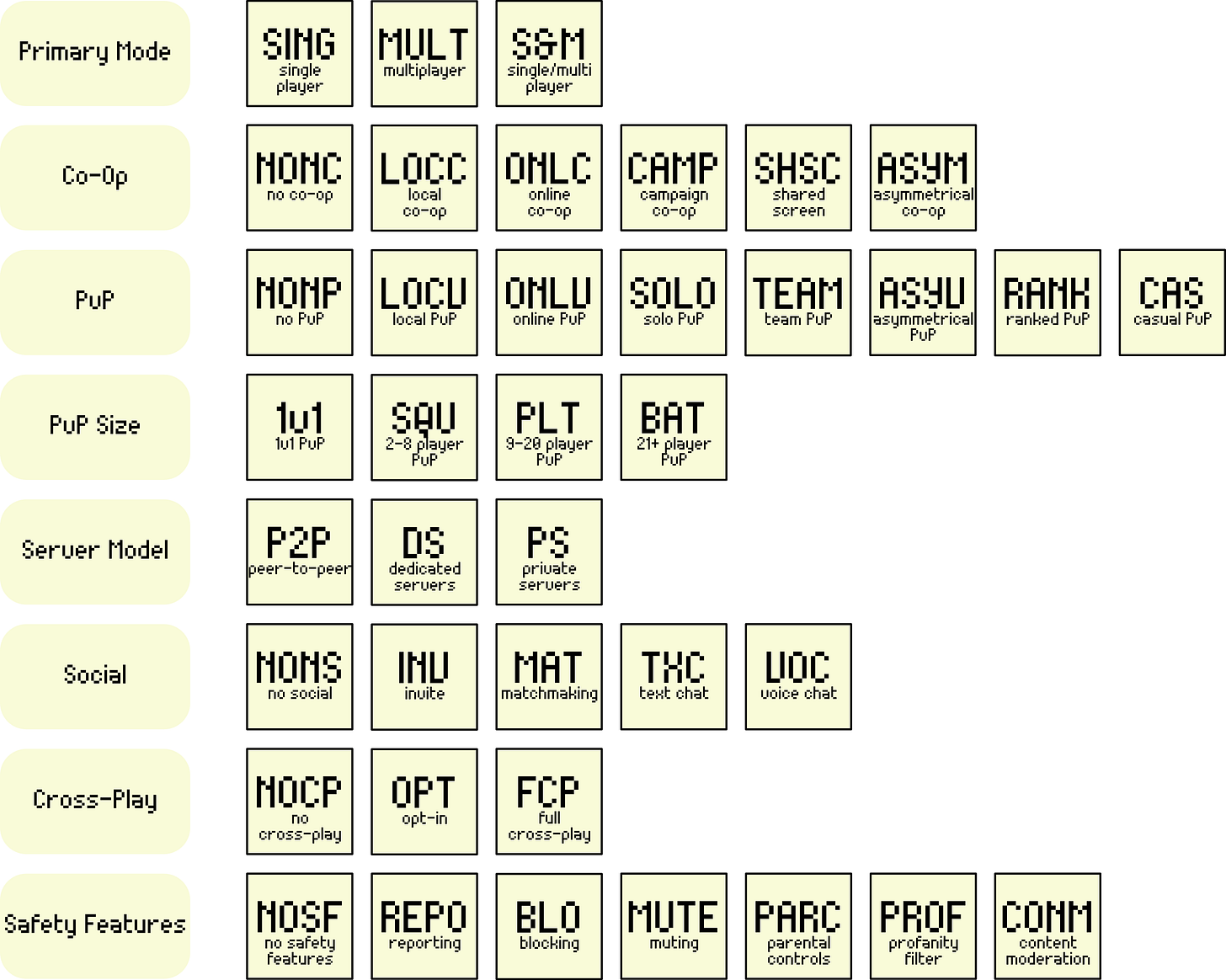Table of Gaming Categorization: Players, Modes, and Networking
Part 3 of many, introducing Players, Modes, and Networking options for a game
LFG: Learning from Games is a series dedicated to making the complex world of video game research just a little easier to understand. I post one about 2-3 times a month in between my Science Shorts and Coming Soon series. LFG #39 is a continuation about reorganizing how we classify games specifically focusing on how we play games.
👋🏼Hello JOMT Reader!
Welcome to this special edition of Learning from Games, where I am exploring the most complete way to categorize games. After publishing the last issue, I had some serious doubts (I still do) about where this is all going.
But in the spirit of being a scientist, I’ll continue this journey with you not knowing where we’ll end up. Thank you all for reading along, and for reaching out via comments or DM. I am truly hoping that we’ll get to a system that will be useful for as many of you as possible, and the comments and suggestions only help to refine this effort.
In the last issue, I covered the Identity and Platform category. It’s the category that allows us to see the relationship between games through subcategories like franchise type and distribution platform.
This time we’re getting a bit closer to the game. But we won’t be talking about content just yet. Who knew there would be this many ways to categorize a game without getting into the specifics!
Introducing, Players, Modes, and Networking:
The subcategories here are:
Primary mode: single or multiplayer, or both
Co-op: none, local, online, campaign, shared screen, and asymmetrical
Player vs. player: none, local, online, solo, team, asymmetrical, ranked, and casual
PvP size: 1v1, squad, platoon, and battalion
Server model: peer to peer, dedicated servers, and private servers
Social options: none, through invites, matchmaking, text chat, and voice chat
Cross-play options: none, opt-in, or full cross-play
Networking safety features: none, reporting, blocking, muting, parental controls, profanity filters, and content moderation
There are several self-explanatory subcategories including primary mode, server model, social options, and cross-play options.
Both co-op and PvP subcategories have ways to connect (local vs. online) and the type of experience in each of those play modes. Asymmetrical co-op or PvP games are occur when teams of different sizes cooperate and compete against each other. A good example of an asymmetrical game is Dead by Daylight.
PvP size is also worth unpacking. It’s important to note that the “size” here refers to the number of players on your team and not the total number of players in the game or on the battlefield. That’s because playing solo vs. 20 players probably won’t feel different than playing against 100 players. But playing on a team of two vs. a team of 20 will provide a totally different experience.
Finally, networking should always come with some safety features. Reporting, muting, and blocking are all actions that a player can take to filter unwanted interactions. Parental control features give parents/guardians the ability to regulate gaming session duration, control in-game purchases, and decide is allowed to network with the player. Profanity filters and content moderation are additional ways to control incoming content.
I imagine that these periodic tables will help organize games into concentric circles — with similar games being closer to the center. But the similarity depends on which of the 11 categories is chosen as the center circle. Games that were similar when organized by mechanic might not be when organized by core genre.
But that’s the beauty of this system: it allows players to see connections between games that they might have with traditional categorization techniques.
On that note, we’ll tackle Core Genre and Subgenre in the next issue.
If you want to read about the Identity and Platform category, you can find it here:
If you liked what you read, please consider giving this post a like and sharing it with your community!






Hi! Im coming from the latest post about onions:) The periodic table of gaming sounded interesting.
Personally I don’t see the intent for trying to fit genres into categories. As you said the lines are blurry, and they are being pushed everyday.
To me genres are a good means of roughly classifying the foundational systems of a game, but I’ve found anytime someone tries to nail down a consise “These are the real genres” it’s never perfect.
I’m curious how you were hoping to introduce this organizational method in a medicinal context?